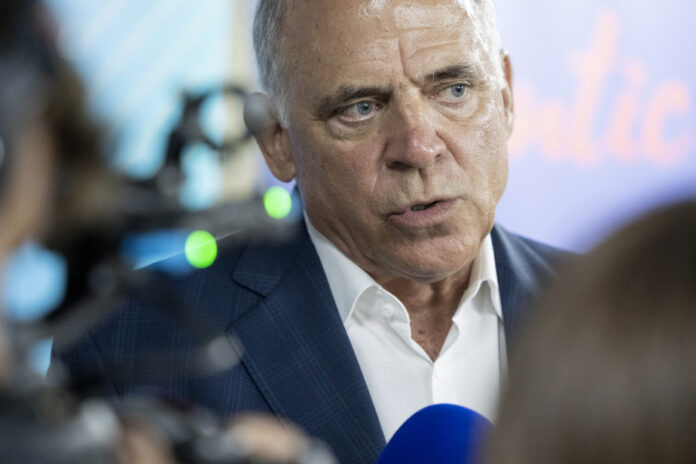The Ministry of the Economy and Energy will wait a few more months before allocating new energy blocks to large industrial projects.
The Legault government wants to give the new boss of Hydro-Québec, Michael Sabia, time to update the state company’s game plan, explains the Minister of the Economy and Energy, Pierre Fitzgibbon, during a press scrum on the sidelines of an announcement at the Montreal Heart Institute. Mr. Sabia took office in August, after the departure of his predecessor Sophie Brochu last April.
“There are a hundred projects still on the table,” replies Mr. Fitzgibbon. We will look at that, probably by the end of the year. We are going to delay the decision a little because we have to wait for Mr. Sabia’s action plan. »
The hundred projects represent some 8,000 megawatts, the minister said. “This is unprecedented in the history of Quebec! »
Quebec hydroelectricity is generating unprecedented enthusiasm while many companies want to reduce the carbon footprint of their projects. However, the capacity of Hydro-Québec, which envisages the end of surpluses for 2027, will not be sufficient to respond favorably to all demands.
Mr Fitzgibbon has repeatedly said that not all projects will be able to go ahead. Industrial projects of more than 5 megawatts (MW) must obtain the green light from the Ministry of the Economy and Energy before being able to connect to the Hydro-Québec network.
A first tranche of potential projects was analyzed last summer by the ministry. In total, 1000 megawatts have been allocated. “There were 21 projects. We accepted 10, we refused 11.”
Quebec must now wait for Mr. Sabia’s guidance to have a better idea of what it will be possible to offer businesses. “We allocated quite a bit of everything we had. I don’t want to allocate megawatts to energy sources that we don’t have. »
Quebec’s approach will not be limited to accepting and refusing projects, the minister explains. The idea will also be to sequence the connections according to when new sources of supply come into service. “Can we organize the schedule so that the new megawatts that will come in, wind power for example, will be there for the project? What we look at is mainly that. »















